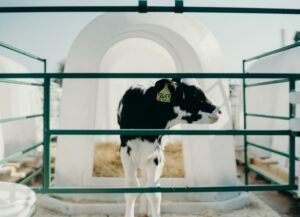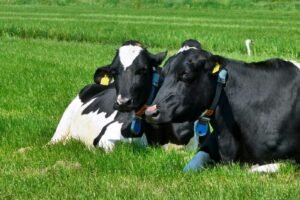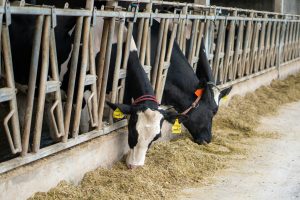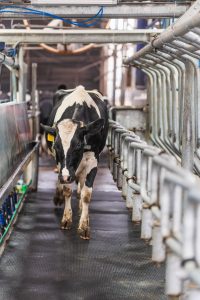Ishaya U. Gadzama & Fernando Díaz
High producing dairy cows require energy dense diets during periods of negative energy balance. Energy deficiency can reduce milk production and negatively affect milk composition, as well as increase the susceptibility of cows to metabolic disorders such as ketosis, fatty liver, and downer cow syndrome. One way to increase the energy density of dairy diets is to increase the amount of nonstructural carbohydrate. However, feeding high starch diets promote greater ruminal propionate production and predispose cows to rumen acidosis and milk fat depression. Fat is a rich source of digestible energy with 2.25 times more energy than starches and digestible fiber found in common grain or forage sources.
Recently, Yanting et al. (2019) determined the effects of feeding stearic or oleic acid on milk performance and energy partitioning of early lactation cows. The experiment was conducted at the Department of Animal Science, Washington State University, Pullman, USA.
The researchers fed two diets rich in either stearic acid (C18:0) or calcium salts of oleic acid (C18:1). In addition, the diets included corn silage (26.1%), rolled corn grain (15.9%), alfalfa hay (34.4%), dried distillers’ grain (3.2%), and soybean meal (5.3%). The researchers used a 99% DM hydrogenated fatty acid (FA) supplement to deliver the stearic acid including approximate 35% palmitic (C16:0), 54% C18:0, and 10% C18:1 (%DM). Oleic acid was delivered as calcium salts supplement (85% FA of DM) including approximately 44% DM C16:0, 6% C18:0, and 35% C18:1.
The results of this study were published in Journal of Animal Science, and these were the main findings:
- Lactating cows on stearic acid-based diet consumed more DM (29.0 kg/d) than cows on oleic acid-based diets (26.6 kg/d).
- There was no treatment difference in milk production (49.7 kg/d). However, milk fat percentage and milk fat yield were greater in cows fed the stearic acid-based diet (3.7%; 1.9 kg/d, respectively) than in cows that received the oleic acid-based diet (3.4%; 1.70 kg/d),
- Feeding stearic acid-based diet increased milk protein yield (1.5 kg/d) compared cows that received the oleic acid diet (1.4 kg/d).
- Due to their greater milk component production, cows that received the stearic acid-based diet showed better energy-corrected milk (51.8 kg/d) than cows fed oleic acid-based diet (48.0 kg/d).
- As a result of higher fatty acid intake, cows supplemented with stearic acid had greater concentration of C18:0 in milk (12.2%) than cows that received the oleic acid supplement (10.4%); but the concentration of C18:1 cis-9 in milk was greater in cows that received the oleic acid-based diet (23.8%) than cows fed stearic acid-based diet (22.4%).
- Fatty acid supplementation did not alter the concentration of blood glucose (63.9 mg/mL), nonesterified fatty acids (0.3 mg/dL), and urea nitrogen (15.7 mg/dL); however, cows that received the stearic acid-based diet had higher concentration of β-hydroxybutyrate (4.2 mg/dL) than cows fed oleic acid-based diet (3.6 mg/dL).
- In addition, body weight gain (0.8 kg/day) and energy portioning was similar between cows fed the two fatty acid supplements; suggesting that the treatments did not affect body fat mobilization and deposition.
In conclusion, the results of this study indicate that stearic acid supplementation increased DM intake and milk energy output while improving body condition.
Reference:
Yanting, C., Ma, G., Harrison, J.H. and Block, E. 2019. Effect of stearic or oleic acid on milk performance and energy partitioning when fed in diets with low and high rumen-active unsaturated fatty acids in early lactation. Journal of Animal Science. 97(11): 4647 – 4656.
© 2020 Dairy Knowledge Center. All Rights Reserved.









